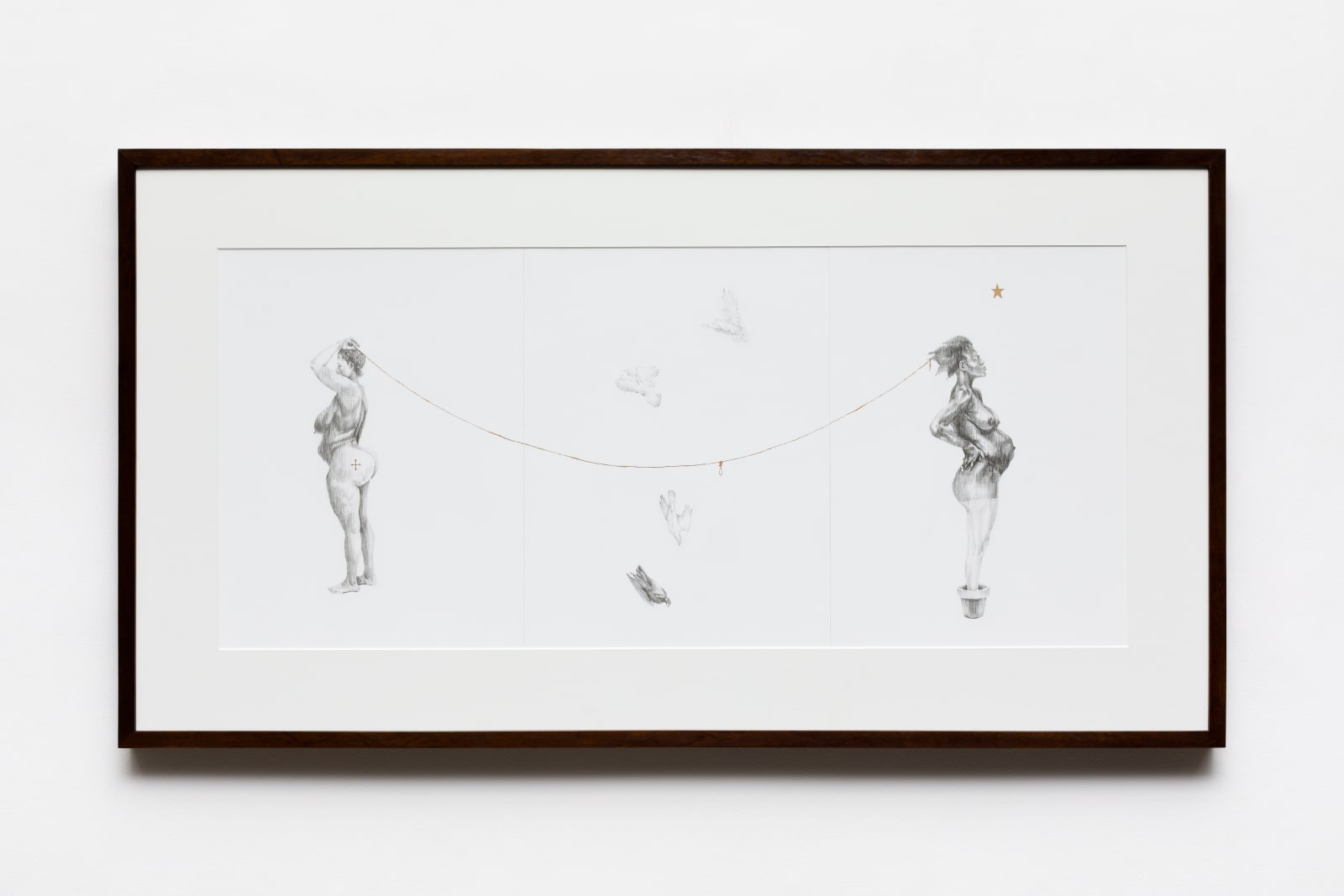Antonio Obá
Genealogia - breve comentário para o livro dos milagres, 2023
graphite and golden chinese ink on paper
grafite e nanquim dourado
grafite e nanquim dourado
40 x 90 cm
15 3/4 x 35 3/8 in
15 3/4 x 35 3/8 in
Something related to heredity is posed here. This is what the figure of a pregnant woman on the right end indicates: the foreshadowing of nativity, compared to the fecund nature...
Something related to heredity is posed here. This is what the figure of a pregnant woman on the right end indicates: the foreshadowing of nativity, compared to the fecund nature of a tree growing in a clay vase. It is clear the reference to a genealogy tree and its temporal essence interlacing one generation to the other; a new life to an ancestral life, here represented by the figure of Saartjie Baartman (1789-1815), much popularized as the Venus Noire. In this sense, the composition triggers a narrative that holds the tension of the opposites: death and life stage an existential drama between the two figures.
It is known that Saartjie Baartman was a woman from the Hottentot ethnic group who had been servant in a Dutch farm in Cape Town. She was “convinced” by her masters to exhibit her body in the United Kingdom. This episode was the starting point of a history of wretchedness in which her body was stigmatized with racism, sexism, misogyny, as well as with the opprobrium of being an aberration to the eyes of the biased exoticism, which evaluated what was different under an animalistic perspective customary in that time. It befell that her body was submitted to a thorough process of dissection and subsequent publication in the Mémoires d'Histoire Naturelle (1817).
In a concise acceptation, the tension between the physical and symbolic death of a woman subjugated and kept hostage by an inhumane context, as opposite to a woman that is fully aware of her bond with this past, though standing elevated before it. It proposes the idea of an existence that is conscious of the hardship of an infertile past, however, extracts strength from this same past to create new life.
It is known that Saartjie Baartman was a woman from the Hottentot ethnic group who had been servant in a Dutch farm in Cape Town. She was “convinced” by her masters to exhibit her body in the United Kingdom. This episode was the starting point of a history of wretchedness in which her body was stigmatized with racism, sexism, misogyny, as well as with the opprobrium of being an aberration to the eyes of the biased exoticism, which evaluated what was different under an animalistic perspective customary in that time. It befell that her body was submitted to a thorough process of dissection and subsequent publication in the Mémoires d'Histoire Naturelle (1817).
In a concise acceptation, the tension between the physical and symbolic death of a woman subjugated and kept hostage by an inhumane context, as opposite to a woman that is fully aware of her bond with this past, though standing elevated before it. It proposes the idea of an existence that is conscious of the hardship of an infertile past, however, extracts strength from this same past to create new life.
